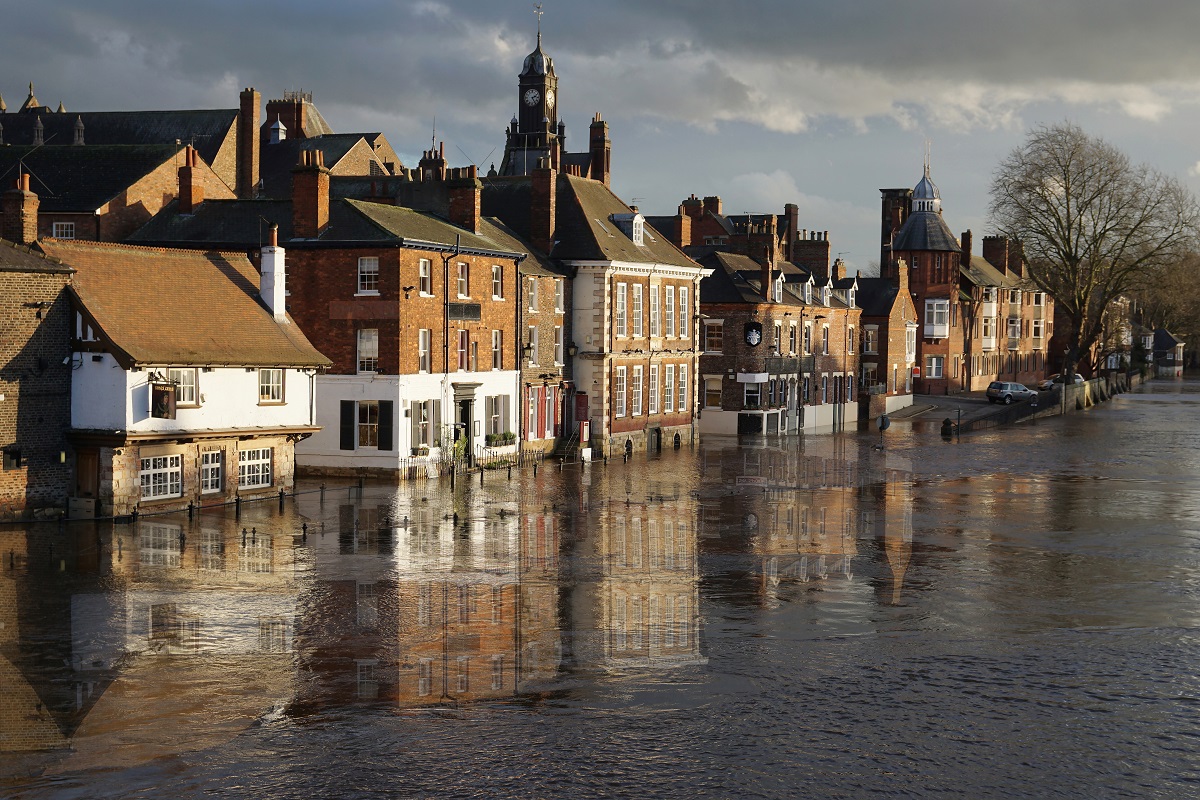
Flash flooding, unpredictable and extreme flooding, rivers that burst their banks, and sewerage systems overwhelmed by the sheer volume of rain are all becoming depressing and unavoidable facts of life, and increasingly common as the climate changes. It is just not possible or practicable for every flood risk to be mitigated at source, and sometimes water will pour in through the main entrance of a property and inundate the ground floor.
It is estimated that 5.2m properties in England and 284,000 in Scotland are currently at risk, and some areas of the UK could become flood ghettos. According to the Scottish Environment Protection Agency, it is expected that this number will rise by another 110,000 in Scotland by 2080 due to the impact of climate change. Already, some 40% of businesses in the UK do not reopen after suffering a catastrophic loss from flooding.
Mitigating risk
The good news is that there are some steps that can be taken at the level of the individual property to resist, mitigate or recover more quickly from the damage caused by flooding. Recent research by Scottish research and policy body ClimateXChange has indicated that 80,000 of the properties currently at risk in the country would benefit most from some level of flood resilience, with the number increasing as climate change impacts are felt.
This is a new and developing area, and CIRIA has recently published a Code of practice for property flood resilience in association with the Chartered Institution of Water and Environmental Management, the Institution of Civil Engineers and RICS, to support the standardisation of approaches. However, there is still much work to be done in establishing where to go for appropriate expertise and reliable products. Building surveyors will – or should be – in the vanguard of providing suitable advice to affected property owners about flood mitigation strategies.
- installing valves in drains to prevent flood water from entering a building and coming up through the toilets
- fitting waterproof flaps to floor vents
- replacing airbricks with alternatives that won’t admit water
- augmenting doors to act as flood barriers – although not too high or the flood water will cause structural damage – or installing flood doors
- directing water away from a building with barriers or swales, though even temporary barriers may require some modifications to a property in advance
- raising electrics and boilers above floor level
- making ground floors resilient so they can recover easily in the event of flooding
- installing wall linings, skirtings and other features that are resistant to water damage
- installing kitchen cabinets that are resistant to water damage
- installing float-switch-operated submersible sump pumps
- installing water-resistant plasterboard or medium-density fibreboard, or puddle pumps.
“There are some steps that can be taken at the level of the individual property to resist, mitigate or recover more quickly from the damage caused by flooding”
Emphasis on recovery
When a flood has occurred, there is also the question of how to return the property quickly to a state fit for occupation. Typically, it takes months to recover from even quite minor flooding events. Specialist building drying techniques and associated monitoring have advanced significantly in recent years, however, and although sometimes more costly upfront they can enable a speedier recovery.
The traditional construction industry approach of removing building fabric on the grounds that it has been in contact with flood water should always be challenged. Often just as much or more water is used in the process of making concrete or replastering. This standard approach is often accompanied by ill-founded fears about fungal decay. Modern techniques for drying and recovering materials are to be encouraged instead where possible.
Governmental support
Both the UK and Scottish governments are working hard to devise ways of informing and supporting local authorities, property owners and their advisers in fighting this battle. They have set up roundtable groups that bring the many and varied players together – including representatives of the insurance profession, loss adjusters and building specialists – to take this work forward.
It is very much in the interests of owners, however, who are ultimately responsible for protecting their property, to take measures appropriate to the risk they face. Building surveyors should therefore note that flood resilience is certain to become a topic of increasing importance to a significant number of property owners, who could benefit from their professional advice and support.
CIRIA code of practice and RICS
RICS was pleased to be involved in the preparation of the CIRIA Code of practice for property flood resilience, a well-researched and thorough document of substantial detail. Flooding continues to be a significant risk to building stock in the UK, and the consistent approach to property flood resilience promoted by the code of practice is an important step in mitigating this.
RICS is working with industry partners to establish robust frameworks and competency requirements for property flood resilience training, and building surveyors are certainly well placed to get involved and make a difference in this critical field.
